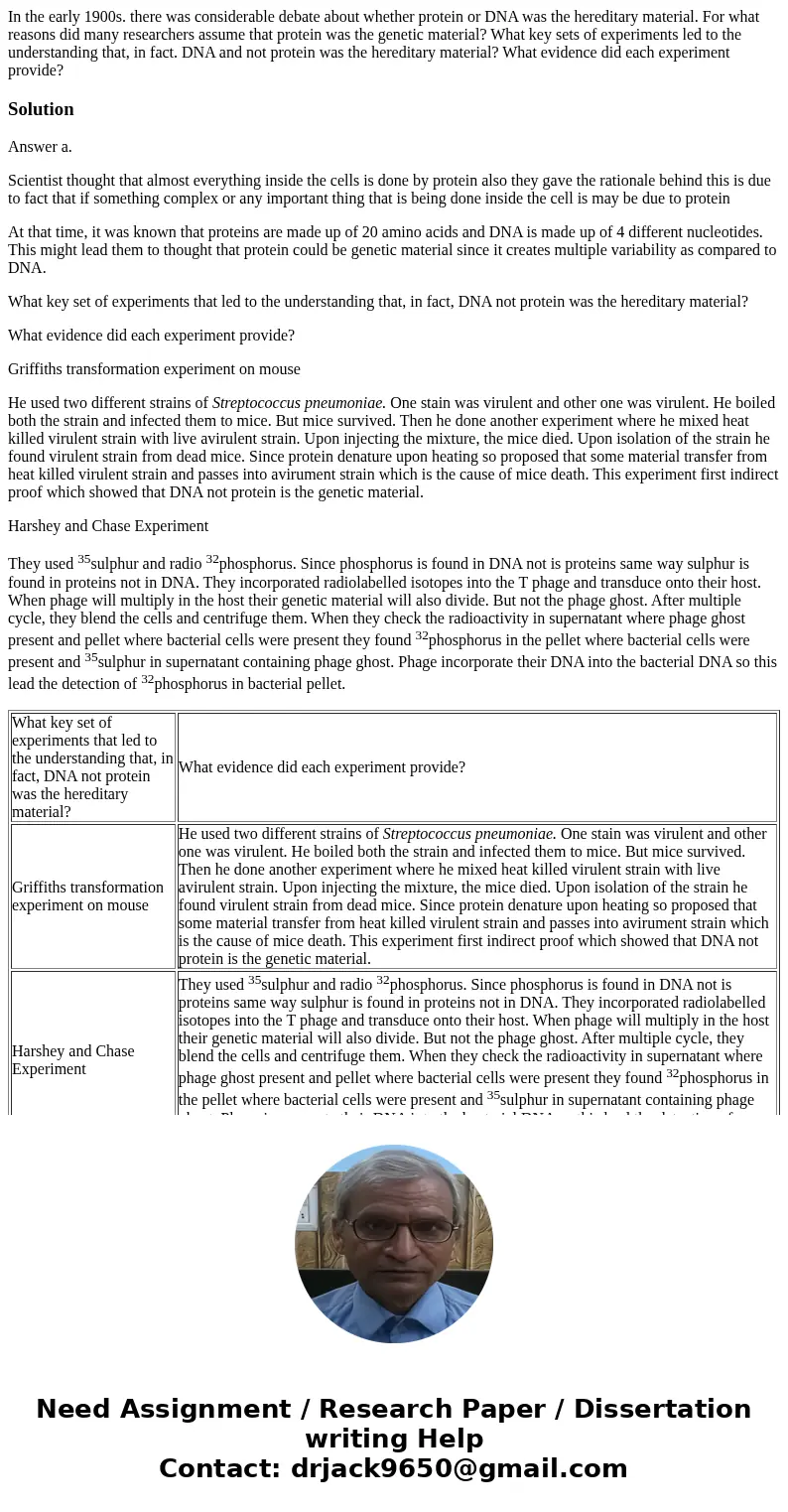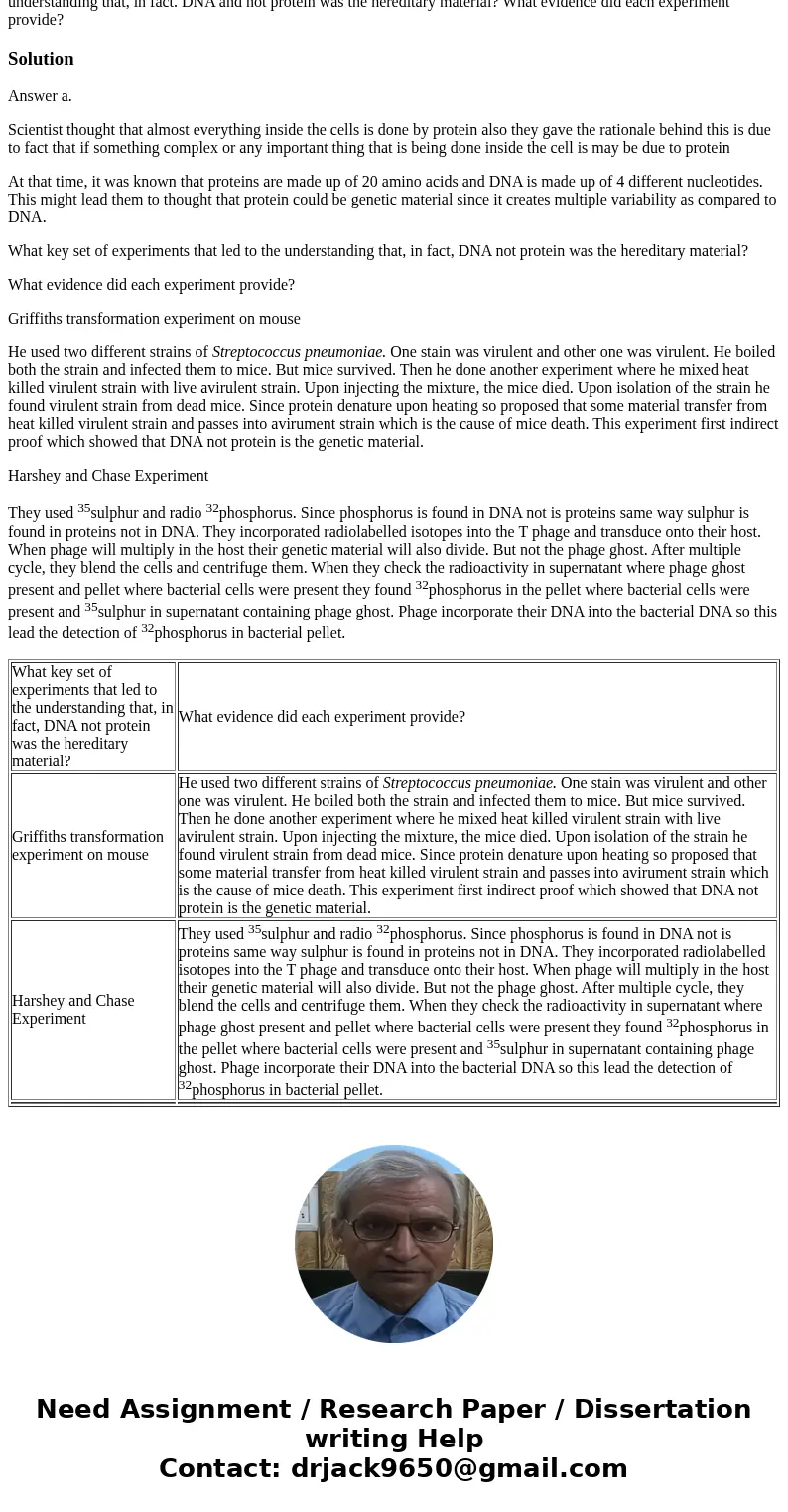In the early 1900s there was considerable debate about wheth
Solution
Answer a.
Scientist thought that almost everything inside the cells is done by protein also they gave the rationale behind this is due to fact that if something complex or any important thing that is being done inside the cell is may be due to protein
At that time, it was known that proteins are made up of 20 amino acids and DNA is made up of 4 different nucleotides. This might lead them to thought that protein could be genetic material since it creates multiple variability as compared to DNA.
What key set of experiments that led to the understanding that, in fact, DNA not protein was the hereditary material?
What evidence did each experiment provide?
Griffiths transformation experiment on mouse
He used two different strains of Streptococcus pneumoniae. One stain was virulent and other one was virulent. He boiled both the strain and infected them to mice. But mice survived. Then he done another experiment where he mixed heat killed virulent strain with live avirulent strain. Upon injecting the mixture, the mice died. Upon isolation of the strain he found virulent strain from dead mice. Since protein denature upon heating so proposed that some material transfer from heat killed virulent strain and passes into avirument strain which is the cause of mice death. This experiment first indirect proof which showed that DNA not protein is the genetic material.
Harshey and Chase Experiment
They used 35sulphur and radio 32phosphorus. Since phosphorus is found in DNA not is proteins same way sulphur is found in proteins not in DNA. They incorporated radiolabelled isotopes into the T phage and transduce onto their host. When phage will multiply in the host their genetic material will also divide. But not the phage ghost. After multiple cycle, they blend the cells and centrifuge them. When they check the radioactivity in supernatant where phage ghost present and pellet where bacterial cells were present they found 32phosphorus in the pellet where bacterial cells were present and 35sulphur in supernatant containing phage ghost. Phage incorporate their DNA into the bacterial DNA so this lead the detection of 32phosphorus in bacterial pellet.
| What key set of experiments that led to the understanding that, in fact, DNA not protein was the hereditary material? | What evidence did each experiment provide? |
| Griffiths transformation experiment on mouse | He used two different strains of Streptococcus pneumoniae. One stain was virulent and other one was virulent. He boiled both the strain and infected them to mice. But mice survived. Then he done another experiment where he mixed heat killed virulent strain with live avirulent strain. Upon injecting the mixture, the mice died. Upon isolation of the strain he found virulent strain from dead mice. Since protein denature upon heating so proposed that some material transfer from heat killed virulent strain and passes into avirument strain which is the cause of mice death. This experiment first indirect proof which showed that DNA not protein is the genetic material. |
| Harshey and Chase Experiment | They used 35sulphur and radio 32phosphorus. Since phosphorus is found in DNA not is proteins same way sulphur is found in proteins not in DNA. They incorporated radiolabelled isotopes into the T phage and transduce onto their host. When phage will multiply in the host their genetic material will also divide. But not the phage ghost. After multiple cycle, they blend the cells and centrifuge them. When they check the radioactivity in supernatant where phage ghost present and pellet where bacterial cells were present they found 32phosphorus in the pellet where bacterial cells were present and 35sulphur in supernatant containing phage ghost. Phage incorporate their DNA into the bacterial DNA so this lead the detection of 32phosphorus in bacterial pellet. |


 Homework Sourse
Homework Sourse